
5 minute read
Manchester Architecture and Abstracts by Brenda Dean LRPS
MANCHESTER ARCHITECTURE AND ABSTRACTS
By Brenda Dean LRPS
In recent years the urban landscape of Manchester has been regenerated with the addition of several contemporary buildings, many of which have won prestigious awards for their designs. Juxtaposed between the traditional architecture reflecting Manchester’s rich heritage, they provide numerous photographic opportunities. The lines, shapes, colours and repeated patterns provide a range of possibilities for abstract compositions whilst the structures, tones and lights around Salford Quays offer opportunities for long exposure shots at dusk.
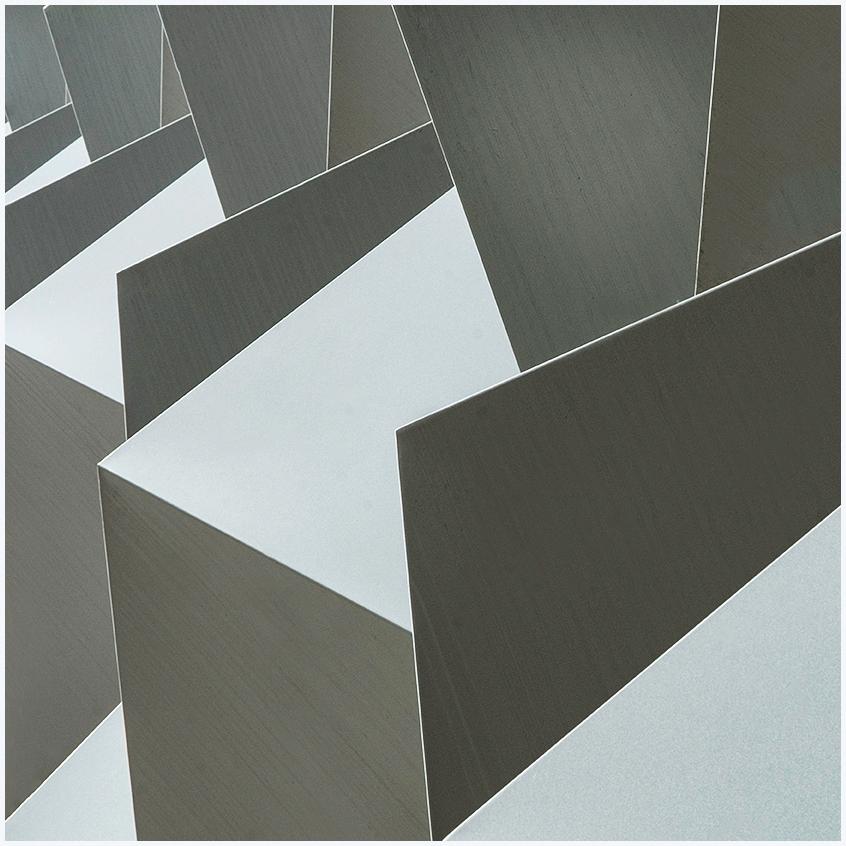
NCP Car Park© Brenda Dean

Owen Street by Brenda Dean
It was therefore, opportunistic that the RPS offered a course ‘Manchester Architecture and Abstracts’ led by Colin Jarvis ARPS. Generally taught over a day on location, the restrictions surrounding Covid-19, resulted in it being adapted to a hybrid online / on-location approach covering three sessions. I signed up for one of the six available places.
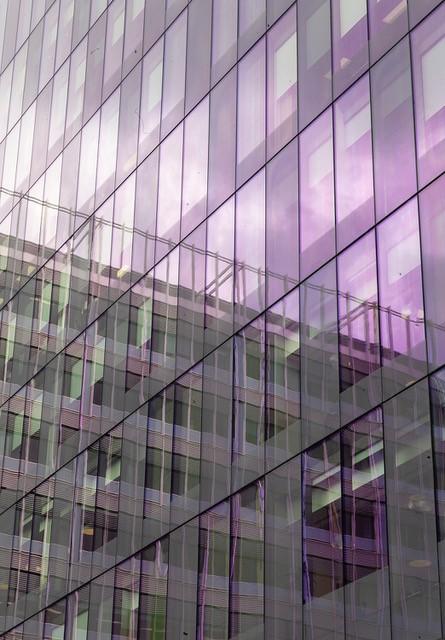
No 1 Spinningfields © Carol Hudson
The first session took the form of an online briefing which included safety considerations within urban areas, equipment, travel and locations; both within the city centre and at Salford Quays. In general, tripods were not recommended within the city centre however, they were necessary for dusk shots at Salford Quays. Equipment suggested included a wide angled lens (17-40mm FF) and a mid-range telephoto lens (24-105 mm FF): a polarizer to reduce reflections in the glass and increase saturation: 0.6 and 0.9 graduated filters were useful for dusk shots with an occasional 10 stop filter for cloud management. We were given an online guided tour of suggested locations together with comprehensive course notes containing maps and useful details including accessibility via train, tram, car and foot. Colin had taken example shots for each location which were used to both inform and model possible shots.
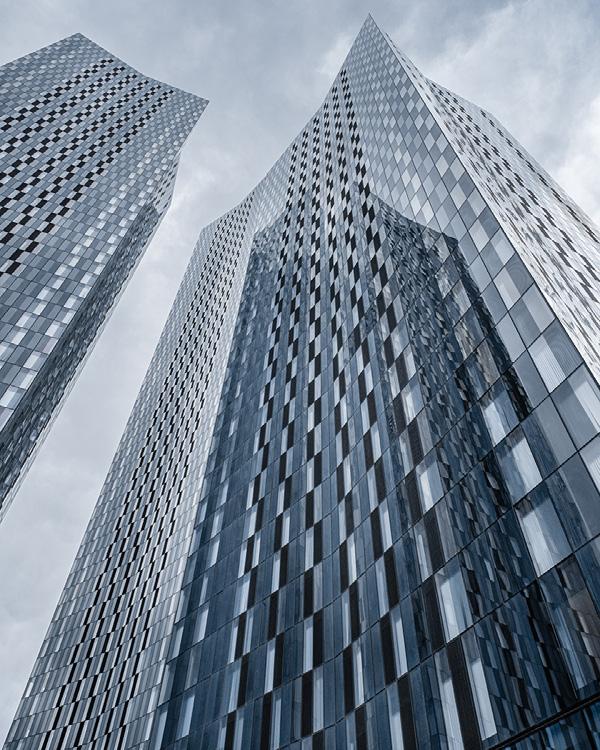
Owen Street Towers © Liz Kenny
They also formed the basis for discussion of compositional, visual and technical elements that would help us achieve successful architectural and abstract shots.
The second part, spanning a period of over a month, involved unaccompanied visits to the locations where we had the opportunity to both familiarise ourselves with the areas and take our shots before submitting four or five of them for feedback and critique in the final session. I initially decided to spend one day within the city centre and, on another day, a late afternoon and evening at Salford Quays. This worked well as an approach and I have since revisited them, further exploring possibilities and building on previous shots. The first session took the form of an online briefing which included safety considerations within urban areas, equipment, travel and locations; both within the city centre and at Salford Quays. In general, tripods were not recommended within the city centre however, they were necessary for dusk shots at Salford Quays. Equipment suggested included a wide angled lens (17-40mm FF) and a mid-range telephoto lens (24-105 mm FF): a polarizer to reduce reflections in the glass and increase saturation: 0.6 and 0.9 graduated filters were useful for dusk shots with an occasional 10 stop filter for cloud management. We were given an online guided tour of suggested locations together with comprehensive course notes containing maps and useful details including accessibility via train, tram, car and foot. Colin had taken example shots for each location which were used to both inform and model possible shots.
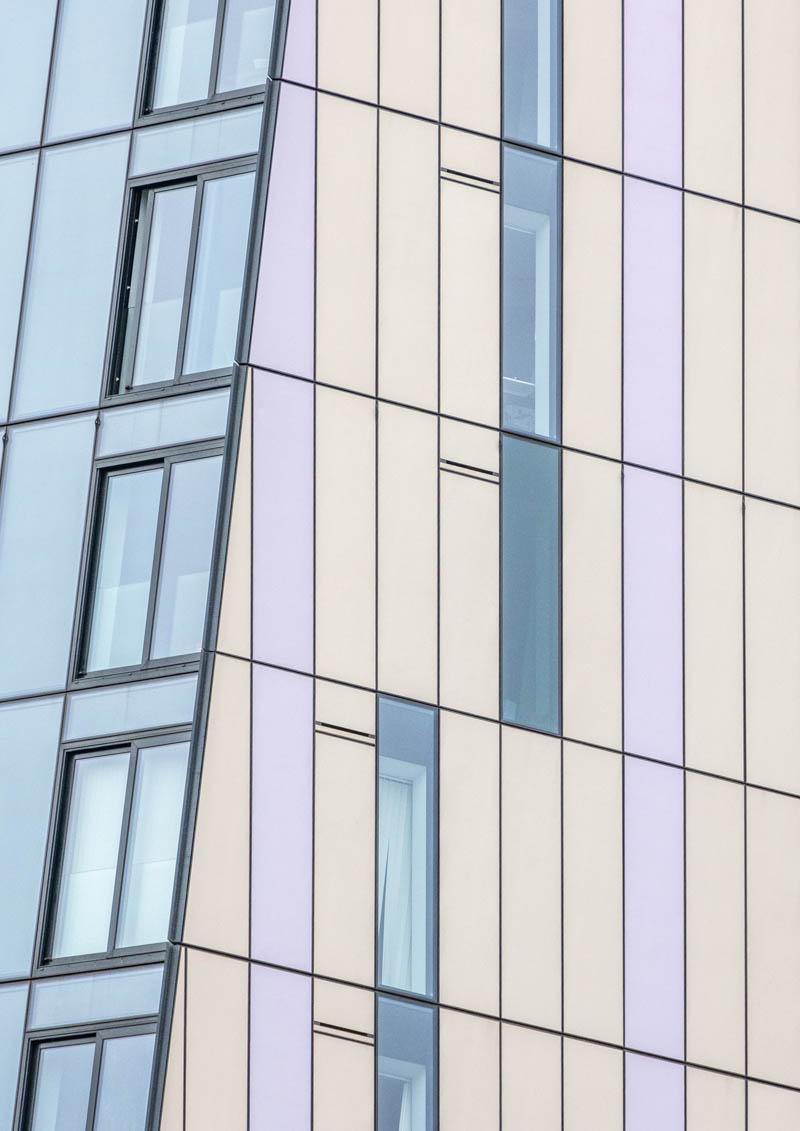
© Francis Sandbach
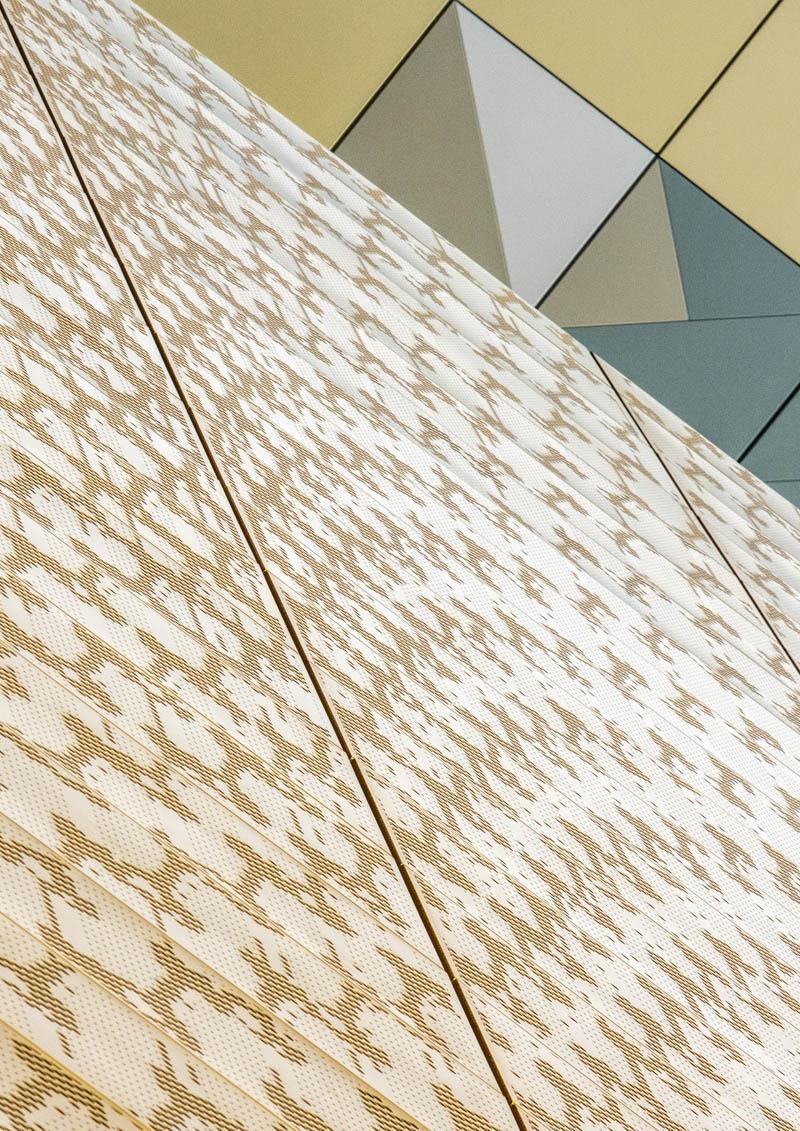
First Street Area © Francis Sandbach
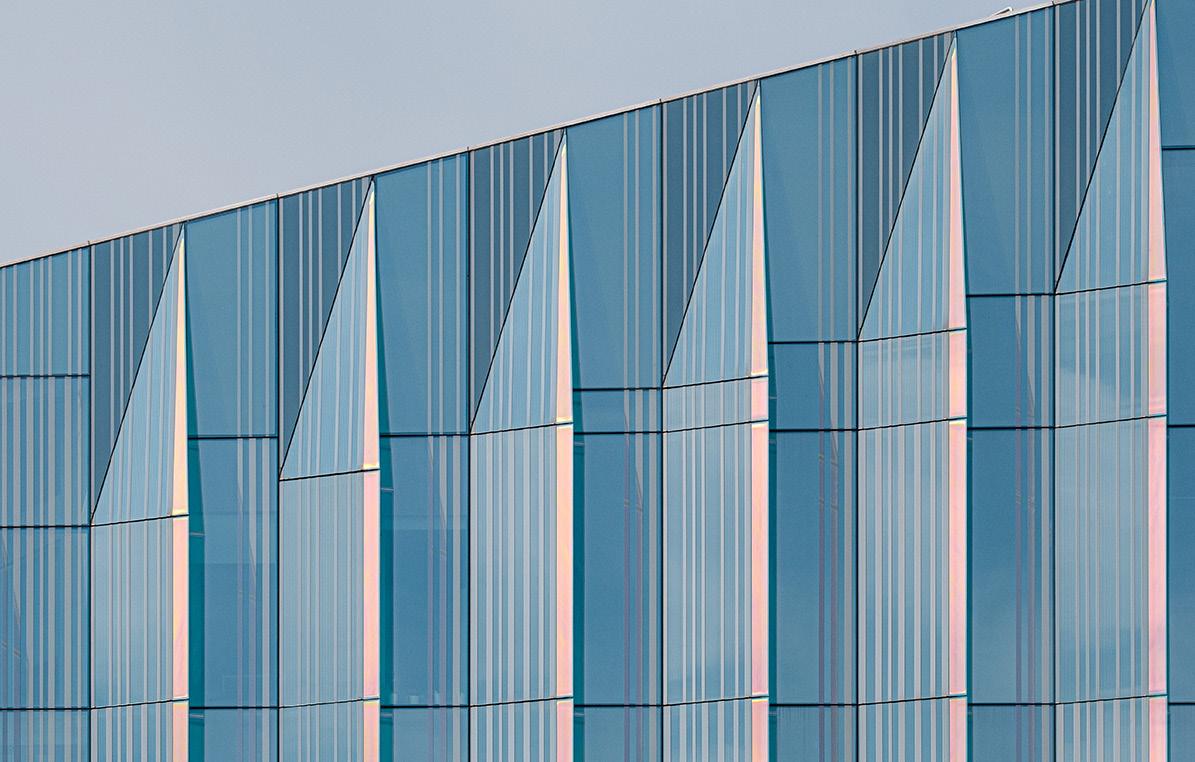
© Liz Kenny
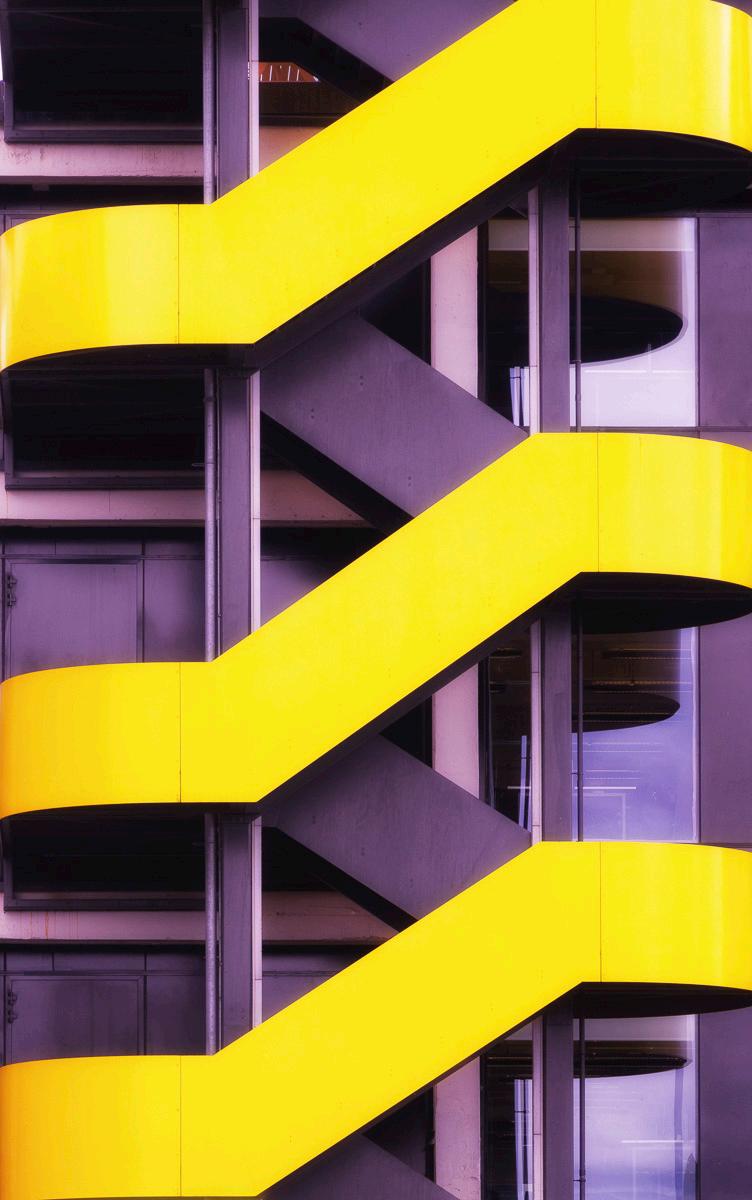
Talk Talk Staircase © Simon Freemont
I felt comfortable working alone in the city centre on a weekday with enough, but not too many, people around. A Sunday morning may be quieter however, you may wish to work alongside another person. Unencumbered by a tripod and travelling light with one camera and two lenses, I was easily able to cover five locations near Deansgate. The NCP Car Park opposite the Premier Inn on Stanley Street provided endless opportunities for exploring the geometrical patterns, shapes and tones created by its three-dimensional surface. We were encouraged to hold the camera at weird angles using the diagonal lines to create dynamic patterns and to zoom in close removing distracting elements whilst simplifying the composition. The glass and steel buildings of Spinningfields Business District provided a great opportunity for exploring reflections and patterns. The award-winning Manchester Family Courts and the iconic No 1 Spinningfields with their respective rectilinear forms and cantilevered platforms allowed for the sculptural interplay of light and shade, dynamic profiles and the use of negative space. The area surrounding Manchester’s new cultural facility HOME, around First Street, has created new spaces in which the buildings relate to each other; inviting opportunities to connect them within shots. In this area I focused on the different textures, colours and shapes on the surfaces of the buildings. Experimenting for example, by holding the camera at different angles, following lines and compressing two buildings alongside each other using a telephoto lens. The tall residential towers, located within landscaped public space on Owen Street, provided opportunities for both wider angled shots and exploration of the patterns created with their subtly different tones of silver grey and anthracite. There were other locations, including the Northern Quarter where shots of graffiti on buildings could be taken.
Salford Quays late on a sunny afternoon brought a continental feel to the course. The internationally innovative MediaCityUK is home to a range of creative industries and broadcasting companies with equally creative architecture. The colours and reflections on the facades of the buildings here change with the time of day. As dusk falls the Quays are transformed by coloured lights enhancing the form of the bridges, the Imperial War Museum and the Lowry. We were encouraged to use graduated filters to balance exposures and to create wide angled shots of the buildings and their reflections in the water. A tripod was necessary here and given the time of day I felt more comfortable working alongside another photographer.
Participant feedback was extremely positive in terms of their experiences and the opportunities offered by the locations. The initial briefing provided a focus and successfully inspired both varied and individual outcomes, as can be seen in the images from all course members on these pages. The gap between the first and third sessions provided sufficient time to plan and take shots. Concentrating purely on visual elements was absorbing bringing a freedom and enjoyment which unleashed creativity and encouraging new approaches.





